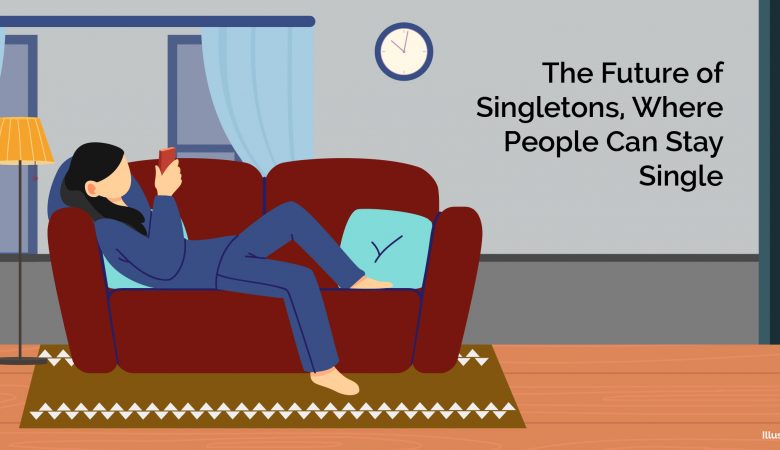Being alone is no longer the taboo it once was. As old stereotypes about needing a partner or being married lose relevance, people are increasingly choosing for themselves whether to be single or not. The term "singleton" describes those who live in a single-person household, especially those who prefer the lifestyle of living alone. It was popularized by the Bridget Jones novels and films, but it is also used in sociology.
Sociologist Eric Klinenberg reports that before the 1950s, no society had large numbers of people living alone. Historically, this has happened when elderly people outlive their spouses, and when men have migrated for work. In modern times, large numbers of people have begun to live happily alone in cities and with the help of communication technologies like the telephone, email, and social networking services. Klinenberg has found that the ability of women to work, own property, and initiate divorce creates more opportunities for living alone in countries like Saudi Arabia where women do not have autonomy, relatively few people live alone.
Single people may live alone before their first romantic partner, after a divorce, or after their partner has died. Couples, married or not, may maintain separate residences as an alternative to cohabitation in a long-distance relationship, a temporary separation due to troubles in the relationship, or simply living apart together.
The number of singletons is correlated with how wealthy the country is. In wealthy countries, people are more likely to choose the privacy, individualism, and sometimes the loneliness of living alone. In poor countries, most people live in extended family groups, which provide material, social, and emotional support to each other, as well as imposing the responsibility of similarly caring for other family members.
In 2021 more than 37.5 million American adults live alone. In Sweden, Denmark, Norway, and Finland – countries with some of the highest living standards – about 40% of households consist of just one person. By the year 2030, this percentage will have increased by 50% or more, depending on the country. The numbers show that millions of people around the world are living single lives devoid of long-term or serious romantic relationships. Such people are called "singletons". Collectivism, including family life, is, for the most part, a relic of the past. Instead, these people live for the sake of self-development, and their lifestyle is progressive.
Of course, not everyone who’s under 35 and single is looking to change that. Caitlin Phillips, a 22-year-old student at the University of Georgia, is open to love if it walks into her life, but she’s not actively looking for it. “I’m too busy, honestly. I travel a lot and I have a great group of friends that I hang out with,” Phillips said in a phone interview, adding that she’s working in addition to studying for a degree in journalism.
Love becomes more about attitude than feeling. Every interaction has its level of intensity, even virtual communication. If a conversation feels good – even in an exchange with chatbots – “happy hormones”, such as serotonin and dopamine, form in the brain. These hormones, which allow us to feel love, are produced not only when we meet in person. From a psychological point of view, we feel that love for robots and avatars is no longer a futuristic fantasy. This could lead us to differentiate the role of singletons much more in the future, as they can satisfy their longing for commitment through technology. Completely new forms of relationships are emerging, and we will increasingly find that these too are beneficial. That they feel real.
Author: Diva Maharani | Illustrator: Akbar Nugroho
sources:
- https://www.washingtonpost.com/lifestyle/2019/03/21/its-not-just-you-new-data-shows-more-than-half-young-people-america-dont-have-romantic-partner/
- https://www.wsj.com/articles/more-americans-are-living-solo-and-companies-want-their-business-11559497606
- https://www.statista.com/statistics/526013/sweden-number-of-households-by-type/
- https://ec.europa.eu/eurostat/web/products-eurostat-news/-/ddn-20170905-1





